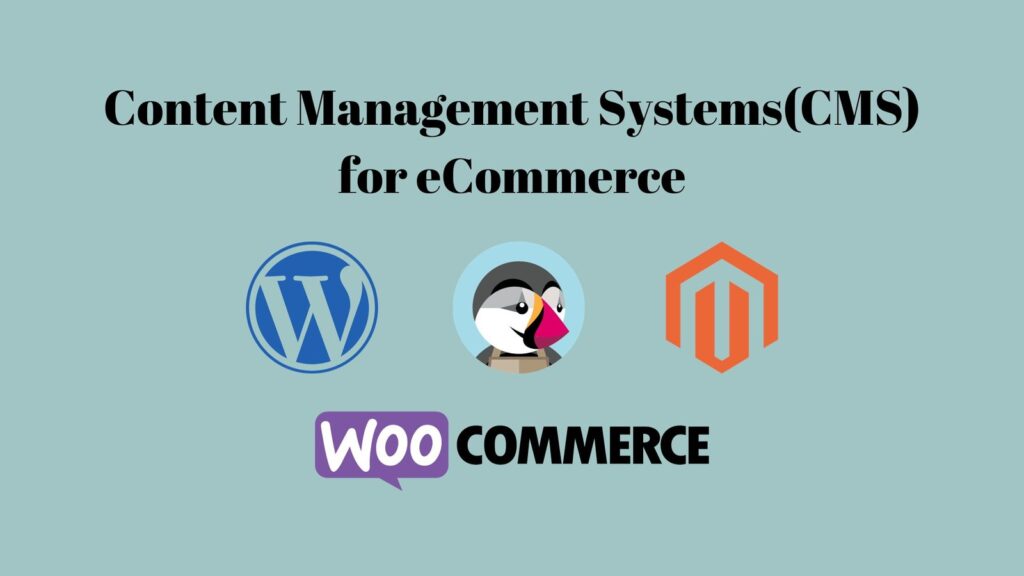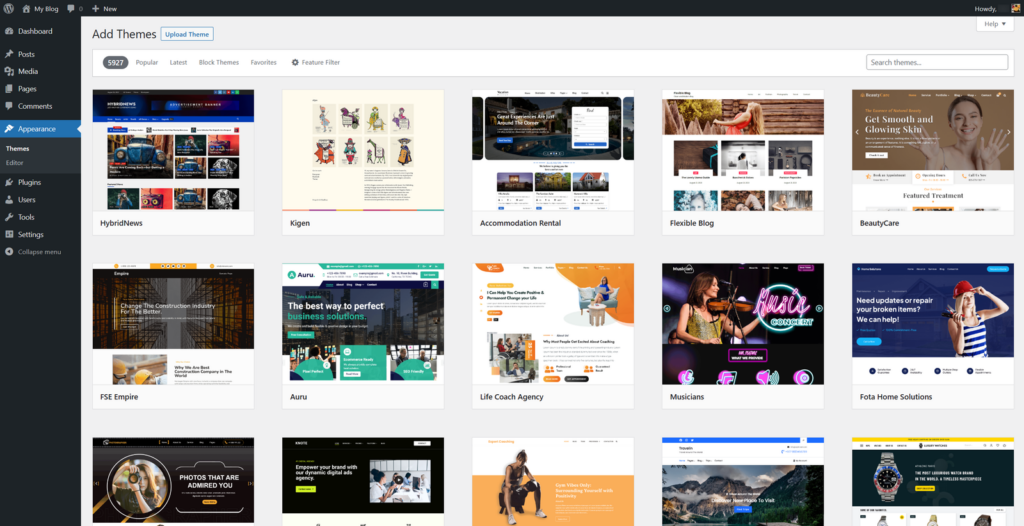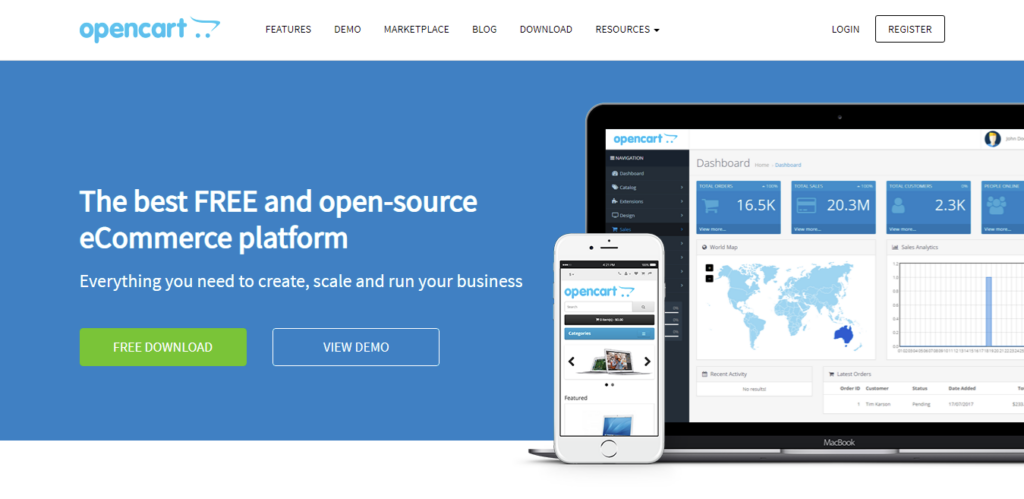In today’s world, creating your own website is no longer a novelty, And even if you don’t understand coding, you can still build a website. This is thanks to the continuous evolution of open-source CMS (free content management systems).
With these platforms, ordinary people don’t need to understand website development technology to have their own websites. For users involved in e-commerce, this is undoubtedly great news. In the past, you might have needed a professional website development team to create your website, but now, you can do it by simply clicking your mouse.
I’m not exaggerating when I say that websites built using CMS platforms now account for over 50% of all websites globally, And this number is still growing. Many expert teams are working with CMS to support regular users in creating their websites. This is a trend, especially if your website is not very large and you want to establish your online presence.

What is Free Content Management System(CMS)?
The term Content Management System is usually abbreviated as CMS. It is a software application or a set of related programs that allow users to create, manage, and modify digital content, The contents can include images, documents, videos, and more. Over the years, this system has become the most widely used for website building.
Most of the Content Management Systems are open-source, that means they are free for any normal users.
CMS places the code on the backend, and both frontend and backend management are done through a graphical interface, It is designed to simplify the process of publishing content on the internet, making it easier for individuals and organizations to create and maintain websites without requiring extensive technical knowledge or coding skills.

Over the years, many open-source CMS Platforms have become popular, such as WordPress, Joomla!, Drupal, Xoops, CmsTop, and others. Additionally, there are some free content management systems developed specifically for e-commerce, such as Magento(Adobe Commerce), Opencart, Abantecart, Prestashop, OsCommerce, 3Dcart, and more. This has allowed many companies to promote their products on their websites without the need for a separate e-commerce platform.
Furthermore, some online website-building platforms have made significant progress. These platforms are also classified by professional organizations as online CMS systems. Examples include Shopify, Jimdo, Weebly, and more.
1. WordPress+Woocommerce
WordPress is undoubtedly the most widely used and popular CMS system globally. WordPress is an open-source blogging system released in 2003. Though it began with the name of a blog, you can create any type of website, including e-commerce sites, thanks to its powerful plugin and theme systems. WordPress is very lightweight and doesn’t require many resources. In general, a typical shared hosting service can set up a good-speed WordPress system. That’s why WordPress has gained widespread popularity.

To build an e-commerce website with WordPress, you need to install e-commerce plugins. There are many e-commerce plugins available, but WooCommerce is the most successful one. This plugin is also open-source and has helped countless small companies, small teams, and individuals establish their independent e-commerce sites. WooCommerce itself supports extensions, almost all payment methods available in the market, and the ability to sell any legal or virtual products. It can be integrated with Facebook and Google for product marketing, making it user-friendly and efficient.
I won’t go into too much detail about WordPress because I’ve already discussed it in other articles. Nowadays, WordPress + WooCommerce is the most popular e-commerce website building CMS platform, without a doubt.
2. Prestashop
The name Prestashop immediately gives away its purpose – it’s for creating online stores, in other words, for e-commerce. If you have some knowledge of building your own website, you’ve probably heard of this platform. it’s a popular Content Management System (CMS) for e-commerce, originating from France and well-known in Europe. The Prestashop community is highly active, and many people in English-speaking countries also use this system to build websites. It has a certain romantic charm that seems unique to the French.

Once you install Prestashop, you already have a complete online store. It comes with default themes that you can use right away. However, Prestashop also offers a wide variety of plugins and themes. You can find these on platforms like themeforest and Template Monster. Many of the designs are modular, allowing you to customize various elements, and it’s SEO-friendly. It even has a built-in multi-language system, meaning you can easily switch your website to different language versions using their admin language system.
I’ve used Prestashop for a while, but due to my work commitments, I didn’t have the time to delve into both systems. However, this CMS for building online stores is very great. It’s designed specifically for e-commerce, and it’s relatively lightweight, making it an excellent choice for small to medium-sized websites. If you’re not a fan of using WordPress for e-commerce, Prestashop is a very good alternative.
3. Magento, it is Adobe Commerce Now
Magento is a professional e-commerce CMS system that was first released in 2008. It has both open-source and enterprise paid versions and has been acquired by Adobe. So, now it’s referred to as Adobe Commerce. What? You don’t know who Adobe is? Well, you surely know their powerful software, Photoshop, as it’s their parent company. Besides their world-renowned design software, they’ve added another strong player.

Adobe has acquired the well-known website building system, Dreamweaver, but it seems that Dreamweaver’s market share is not as strong as it used to be. Additionally, Adobe has another website building system called Muse. This shows that Adobe doesn’t just dominate the market for media design but also aims to be part of the website development platform.
However, for regular users, Magento might not be easy to use because it requires some knowledge of web development. Understanding certain Magento concepts and logic, like modules and page structures, can be quite challenging. Upgrading, installing themes, and plugins can be a bit of a hassle for newcomers. Moreover, Magento requires teamwork, and the initial hosting requirements are relatively higher, with a minimum of 2GB of memory for hosting.
I once used Magento 2.3.x for a few months, and although I managed to set up a website, I eventually gave up. There were numerous issues in the later stages, and they weren’t as easy to resolve as with WordPress. Maintenance was challenging, especially since I’m not a professional developer. However, slowly but surely, many user-friendly plugins and themes have appeared online, allowing many ordinary users to build e-commerce sites with Magento. It seems that Magento is also moving in this direction.
The biggest difference between Magento and other CMS e-commerce systems is its suitability for large e-commerce websites. It excels in SEO optimization and handles websites with tens of thousands of products effortlessly. Most free content management system platforms on the market are designed for small to medium-sized e-commerce sites. In the e-commerce sector, Magento is truly professional, and its community is thriving. In the realm of e-commerce alone, Magento is undoubtedly one of the most popular CMS systems in the foreign market.
If you are much interested in the Magento system but are concerned about its maintenance, there are fully managed Magento hosting available online, such as Cloudways and Nexcess. They handle all the technical aspects, allowing you to focus on managing your website and business.
4. Opencart
Opencart is also a very popular free open-source CMS website building platform, and many ordinary people can easily create websites with it. Although there is significant competition, Opencart consistently holds the forth position in the e-commerce CMS platform market, following behind Woocommerce, Magento, and Prestashop. It’s said that more than 400,000 online e-commerce websites use Opencart.

Speaking of Opencart’s development journey, it has had its share of challenges. The project started back in 1998, not originally written in PHP. However, for various reasons, the original author ceased development from 2000. It was later taken over by the British developer Daniel Kerr, and in 2009, the first stable version was released. Opencart offers both free and Premium versions.
Opencart boasts numerous features, including customizable templates that users can freely edit, excellent SEO optimization, and the ability to sell any legal products, including virtual downloadable items. It also has its own comment and rating system, as well as coupon functionality.
Opencart is suitable for small to medium-sized e-commerce websites. If you’re looking for an alternative to WordPress+WooCommerce, Opencart is a great choice. Their official website provides a free demo for users to try out. If you’re not very familiar with this platform, you can start by using their demo.
5. Joomla
Joomla is also an open-source and free content management system, mainly used for website creation. This system stands out among many CMS platforms, as per the latest data, it ranks second. However, it’s still over 30% behind the top-ranked WordPress. This can only mean that WordPress is either exceptionally powerful or just better suited for the general public.

Joomla is a more comprehensive CMS, but it’s not as user-friendly as WordPress when you first start using it. Installation and upgrades are not as smooth as WordPress, and you need to have a good understanding of concepts like units, components, and modules. But once you grasp these, Joomla becomes more convenient to use than WordPress.
You can create a wide range of websites with Joomla too, including blogs, image and video sites, news sites, forums, and, of course, e-commerce websites.
Similar to WordPress, Joomla also requires plugins to build e-commerce websites. However, unlike WordPress, Joomla has a greater variety of e-commerce plugins available. Although WordPress also offers a fair number of e-commerce plugins, WooCommerce dominates the market, and most others are less prominent.
Here are five e-commerce plugins that you can use with Joomla:
- VirtueMart – Completely free and a representative e-commerce plugin for Joomla.
- J2Store – The most feature-rich e-commerce plugin, with almost all the features an e-commerce site needs.
- HikaShop – A lightweight plugin with fewer features but strong extensibility and flexibility.
- EShop – Built on the Joomla Model-View-Controller (MVC) framework, it has many amazing features and a user-friendly interface with powerful customization.
- redShop – This plugin comes with built-in templates, allowing you to style your website according to your needs.
Joomla falls between WordPress and Magento (Adobe Commerce) in terms of difficulty of use. It is SEO-friendly and can be a good choice if you don’t like WordPress but find Magento too challenging. When building a website with Joomla, it’s best to choose a cPanel hosting provider.
6. Drupal Commerce
Drupal can be considered a well-established CMS. It has been around for over 20 years, starting in 2001, and its market share has consistently hovered around 2%, with a slight decline in recent years.
However, the industry often refers to Drupal as a content management framework rather than just a content management system. In simple terms, it allows you to package content and then arrange, display, and categorize this packaged content freely using modules.
Its functionality is highly flexible, and compared to traditional CMS platforms, it offers more freedom. Typically, developers can easily create new things with Drupal, making it very popular in the industry, especially among those who enjoy exploring development.
However, with great freedom comes some sacrifices. For example, Linux is known for its freedom, but the multitude of versions can be overwhelming, which is not always ideal for platform developers. Each major Drupal update often leads to inconsistent updates for associated modules, which has been a point of criticism among many users.

Drupal Commerce inherits all the characteristics of Drupal and then adds e-commerce functionality on top of it. This includes product publishing, guiding customers through the checkout process, tracking invoices, receipts, shipping, payments, and other necessary functions for online businesses. Due to its modular content management, you can easily add various features. For instance:
- Commerce Shipping allows you to configure shipping costs, shipping regions, and integrate third-party modules like UPS and DHL for calculating shipping fees.
- The Commerce Stripe module enables customers to make payments directly on your website without leaving it. Many e-commerce websites rely on third-party payment methods that often redirect users to external sites for payments.
- The Currency module allows you to easily add and switch between different currencies on your website’s frontend.
However, Drupal’s high degree of flexibility may require some time for newcomers to study. If you enjoy tinkering and customization, Drupal is well-suited for you.
Which CMS is the easiest for Beginners?
In terms of difficulty, WordPress + WooCommerce is the easiest content management system for beginners, followed by Prestashop and Opencart, which are also very beginner-friendly.
If you have technical expertise, then Joomla, Magento, and Drupal might be suitable for you to delve into. While Magento is the best platform for large e-commerce websites, and Drupal Commerce offers the highest degree of flexibility.
Ultimately, your choice should depend on your individual circumstances, such as your budget and your website building knowledge, among other factors. If it’s difficult for you to choose one of those CMSs, then consider going with WordPress+WooCommerce. This is the simplest and free content management system solution.
You can refer to the ultimate website building tutorial on this site: How to Build an eCommerce Website with WordPress.
Final Thoughts for eCommerce Content Management System
There are indeed many Free content management systems available for e-commerce, such as OScommerce, zen cart, nopcommerce, Abantecart, X-cart, and so on. Each has its own characteristics. Nowadays, CMS platforms are gradually moving towards being more user-friendly.
For enthusiastic individuals, if you can spare some time to research, you should be able to create a good e-commerce website with each of them. Otherwise, WordPress and WooCommerce remain a simple, affordable, and user-friendly choice suitable for people of all ages.
However, the entire IT industry is constantly evolving, especially with the rapid evoluting of AI in recent times. Many CMS platforms are starting to integrate AI technology. In the future, website creation might not require much thought; you can simply hand it over to AI to build the site you want. This is actually a somewhat scary prospect. Will human brains shrink as a result?





